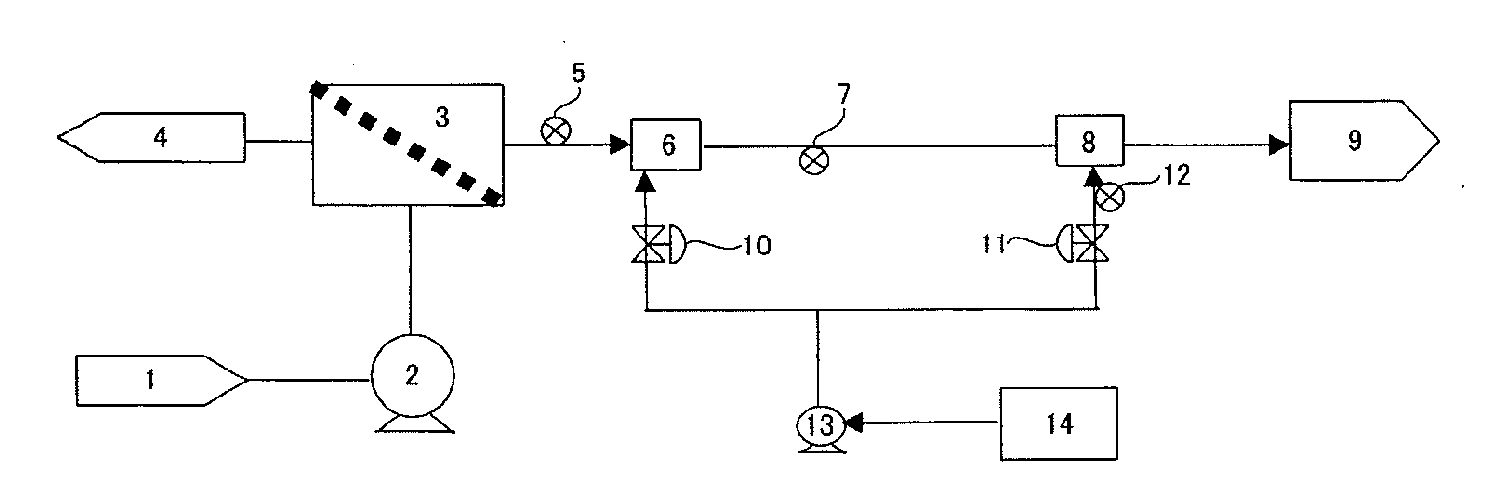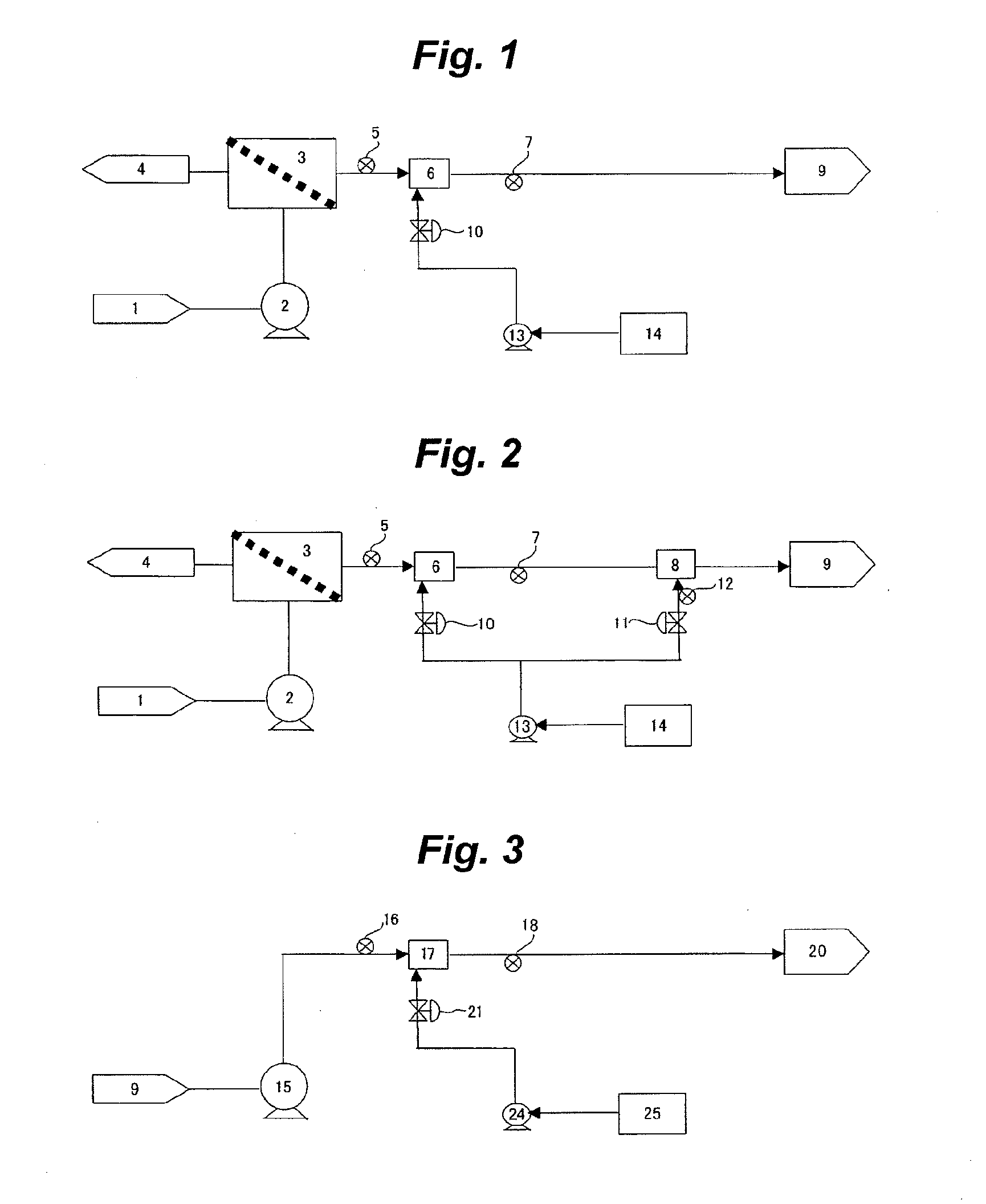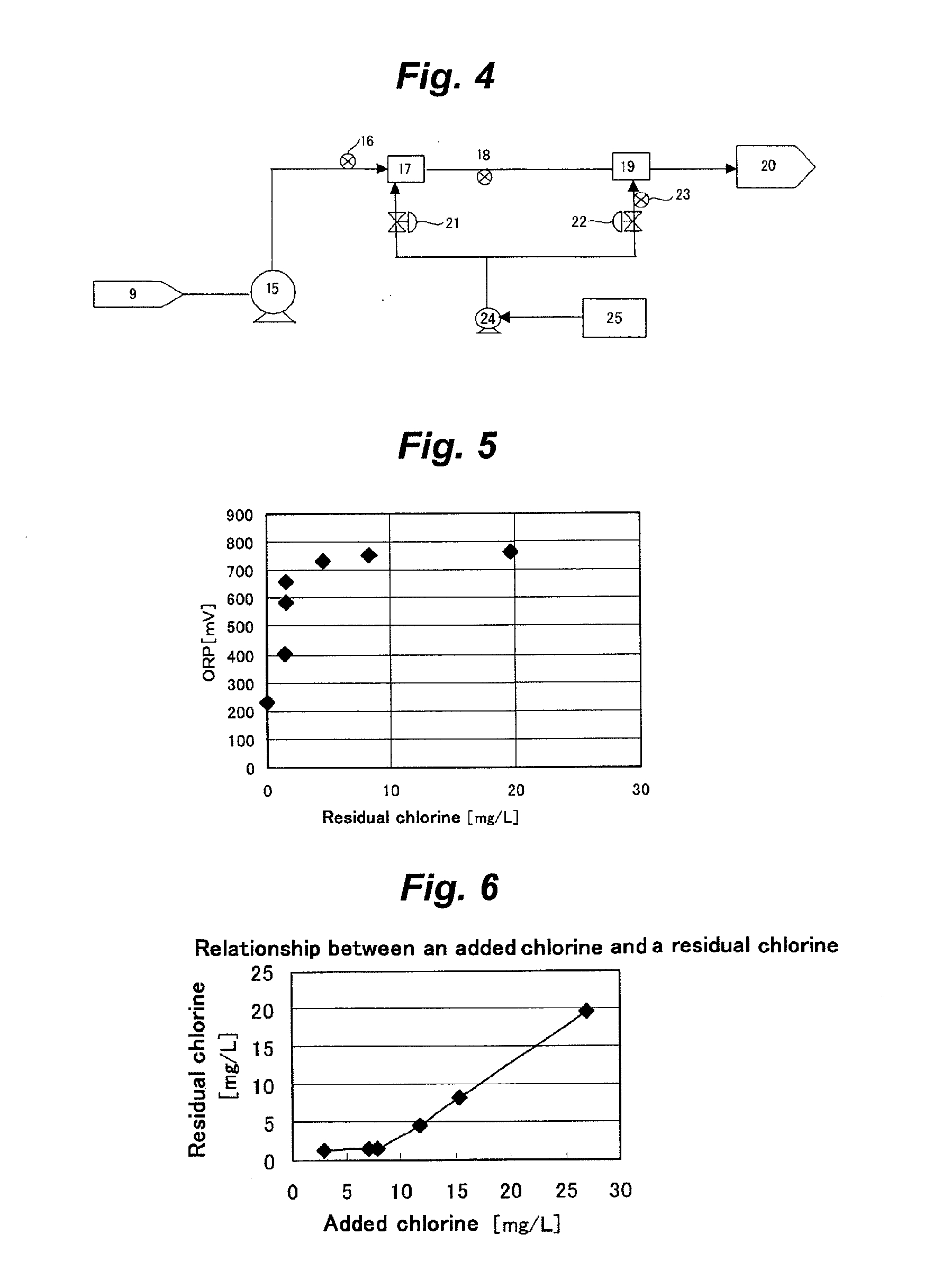Method of treating ballast water of ship
a ballast water and ship technology, applied in the nature of treatment water, water/sewage treatment by oxidation, vessel construction, etc., can solve the problems of shellfish poisoning and red tide, damage to aquaculture industry, and severe damage to fishes
- Summary
- Abstract
- Description
- Claims
- Application Information
AI Technical Summary
Benefits of technology
Problems solved by technology
Method used
Image
Examples
example
Example 1
Step 1: Hypochlorite Treating Process
[0116]An aqueous sodium hypochlorite solution (trade name: Aronclean LB, manufactured by Toagosei Co., Ltd.) was added to 2.6 L of fresh water in every approximately 5 minutes, the temperature, pH, residual chlorine content (mg / L), oxidation-reduction potential (ORP) and dissolved oxygen (DO) then were determined, and the results are summarized in Table 1. The residual chlorine content was determined by a titration method of using potassium iodide and sodium thiosulfate, and the other items were determined respectively by using proper instruments. The specific density of the fresh water used was 1.00, and the unit mg / L in Table is equivalent to ppm.
TABLE 1Residual chlorine contentTemperatureDOORPmg / LpH° C.mg / LmVInitial value6.9428.5—28906.9428.5—28906.9728.5—2880.97.128.5—5912.77.3328.37.96565.67.5528.37.86749.07.7228.37.768411.57.8228.17.769715.27.9228.17.770723.08.0628—711
[0117]From the results, increase of the residual chlorine conten...
example 2
Step 1: Hypochlorite Treating Process
[0122]A treatment was carried out in a similar manner to Example 1, except that 2.6 L of fresh water in Step 1 was replaced with 2.5 L of sea water. Specifically, an aqueous sodium hypochlorite solution (trade name: Aronclean LB, manufactured by Toagosei Co., Ltd.) was added to 2.5 L of sea water in portions at an interval of approximately 5 minutes, and the temperature, pH, residual chlorine content (mg / L) and oxidation-reduction potential (ORP) were determined. The results are summarized in Table 3. The specific density of the sea water used was 1.03, and the numerical value obtained by dividing the unit mg / L in Table by 1.03 is equivalent to a value expressed in ppm.
TABLE 3Residual chlorine contentTemperatureORPmg / LpH° C.mVInitial value8.125.81830 8.125.82120 8.125.82680 8.125.83431.18.125.86291.98.125.87202.98.225.77366.08.325.875311.5 8.425.875816.9 8.525.874820.3 8.525.8724
[0123]The results in Table 3 showed that, similarly to the treatm...
example 3
[0125]A treatment was carried out in a similar manner to Example 2, except that 2.5 L of sea water in Step 1 of Example 2 was replaced with 1.5 L of sea water. Specifically, similarly to the treatment in Step 1 of Example 2, an aqueous sodium hypochlorite was added to the other sea water (1.5 liter) and the temperature, residual chlorine content (mg / L) and oxidation-reduction potential were determined. The results are summarized in Table 4. In Table 4, the chlorine amount (mg / L) added is an integrated amount of the effective chlorine in the aqueous sodium hypochlorite solution added to the sea water. The specific density of the sea water used was 1.03, and the numerical value obtained by dividing the unit mg / L in Table by 1.03 is equivalent to a value expressed in ppm.
TABLE 4Residual chlorineResidual chlorinecontentcontentTemperatureORPmg / Lmg / L° C.mVInitial value—25.02322.91.425.04037.11.625.05847.81.625.166011.7 4.625.173215.3 8.325.175326.9 19.625.1765
[0126]FIG. 5 shows the relati...
PUM
 Login to View More
Login to View More Abstract
Description
Claims
Application Information
 Login to View More
Login to View More - R&D
- Intellectual Property
- Life Sciences
- Materials
- Tech Scout
- Unparalleled Data Quality
- Higher Quality Content
- 60% Fewer Hallucinations
Browse by: Latest US Patents, China's latest patents, Technical Efficacy Thesaurus, Application Domain, Technology Topic, Popular Technical Reports.
© 2025 PatSnap. All rights reserved.Legal|Privacy policy|Modern Slavery Act Transparency Statement|Sitemap|About US| Contact US: help@patsnap.com



